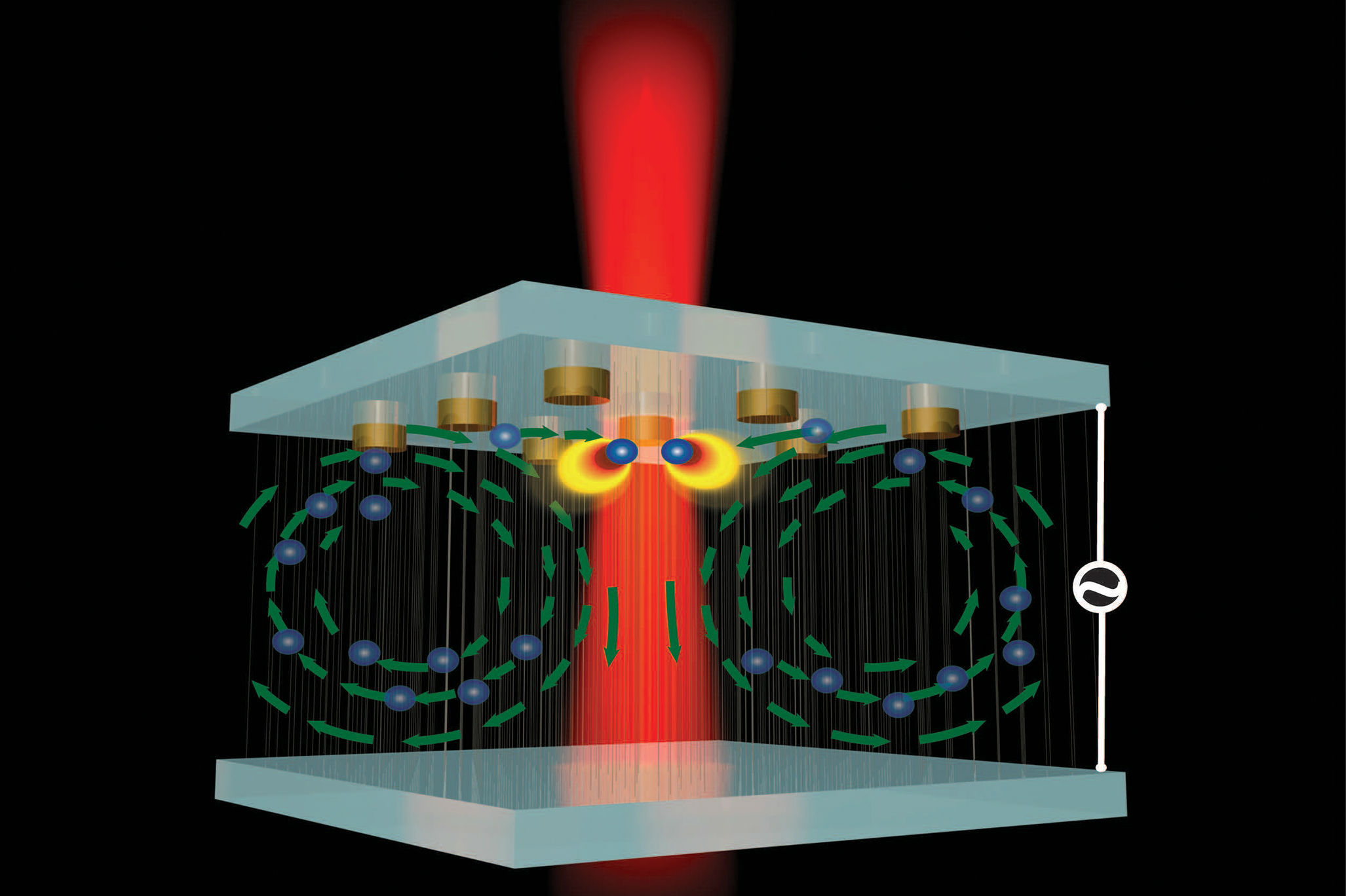
Researchers create a nanotweezer that can manipulate light
Researchers have developed a “nanotweezer” that can position tiny objects quickly and accurately and then freeze them in place.
The device, created at Purdue University’s Birck Nanotechnology Center enables improved nanoscale sensing methods and aids research to manufacture advanced technologies such as quantum computers and ultra-high-resolution displays.
The nanotweezer uses a cylindrical gold “nanoantenna” with a diameter of 320 nanometers (about 1/300th the width of a human hair). The structures concentrate and absorb light which results in “plasmonic hotspots” that make it possible to manipulate nanometer-scale objects suspended in a fluid.
“The proposed approach enables the immediate implementation of a myriad of exciting applications,” said Alexandra Boltasseva, associate professor of electrical and computer engineering.
Plasmonic devices manipulate and control light by harnessing clouds of electrons called surface plasmons.

Researchers believe that the nanotweezer could potentially be used in a plethora of applications like improved-sensitivity nanoscale sensors and the study of synthetic and natural nanoobjects like viruses and proteins, as well as to create “nanoassemblies” for plasmonic materials that could enable future technologies. They could also be used in ultra-resolution “optofluidic” displays and plasmonic circuitry for quantum logic units.
The nanotweezer might even be used to create devices containing nanodiamond particles or other nanoscale light-emitting structures that can enhance the production of single photons and create even better computers and communication technology.
A traditional computer use electrons to process information. To give it a boost, researchers could employ the unique quantum properties of electrons and photons, according to Vladimir M. Shalaev, co-director of a new Purdue Quantum Center, scientific director of nanophotonics at the Birck Nanotechnology Center.
“The nanotweezer system has been shown to cause convection in fluid on-demand, resulting in micrometer-per-second nanoparticle transport by harnessing a single plasmonic nanoantenna, which until now has been thought to be impossible,” said Justus C. Ndukaife, a doctoral student.
Previous research had shown that convection using a single plasmonic nanoantenna was too weak to induce such a strong convection, below 10 nanometers per second, which cannot result in a net transport of suspended particles.
Purdue researchers have overcome the limitation of using a single plasmonic nanoantenna to induce strong convection by and increased the velocity of particle transport by 100 times by applying an alternating current electric field in conjunction with heating the plasmonic nanoantenna using a laser to induce a force far stronger than otherwise possible.
“This work brings the outstanding spatial resolution of plasmonic hotspots to the field of rapid electrokinetic patterning (REP),” said Steve Wereley, a professor of mechanical engineering.
The new hybrid nanotweezer combines a near-infrared laser light and an electric field, inducing an “electrothermoplasmonic flow.”
Once they turned off the electric field, the laser holds the particles in place, so it can operate in two modes. First, the fast transport using alternating current, and then you turn off the electric field and it goes into the plasmonic tweezing mode.
The Purdue researchers are the first to induce electrothermoplasmonic flow using plasmonic structures.
The team found that laser can trap the particles and they can be precisely positions, so it can also create patterns to project images, potentially for displays with ultra-fine resolution.
The paper was authored by Ndukaife; Alexander V. Kildishev, an associate professor of electrical and computer engineering; Agbai George Agwu Nnanna, a professor of mechanical engineering; Shalaev; Wereley; and Boltasseva.
More Information: Purdue University

Comments are closed, but trackbacks and pingbacks are open.